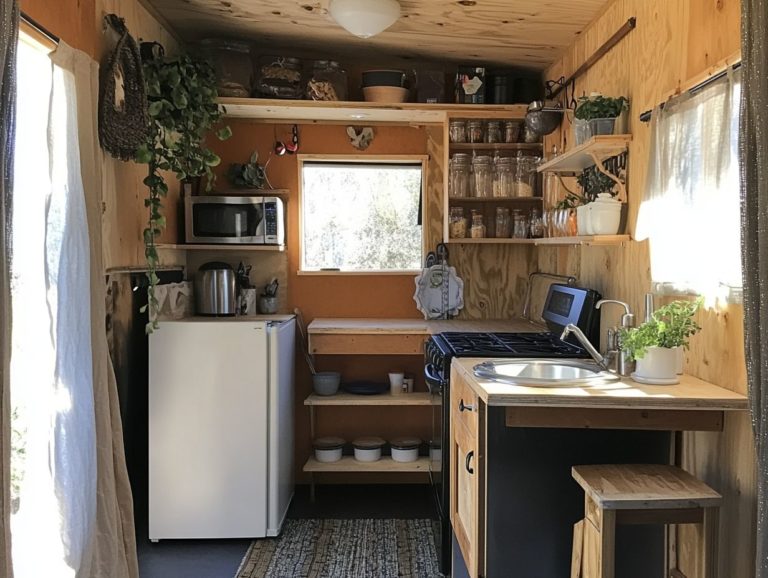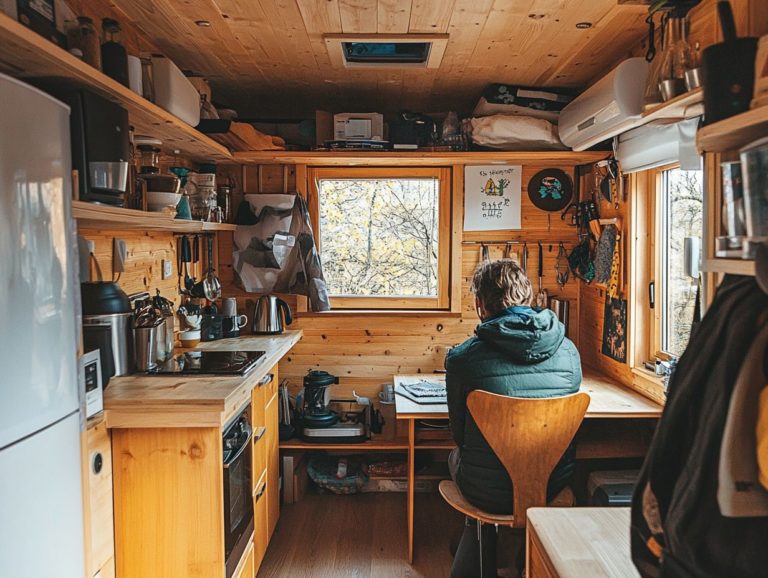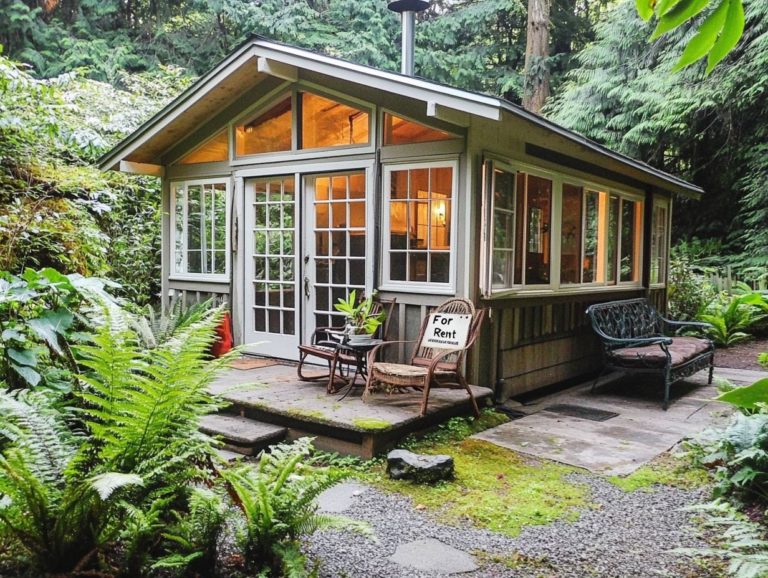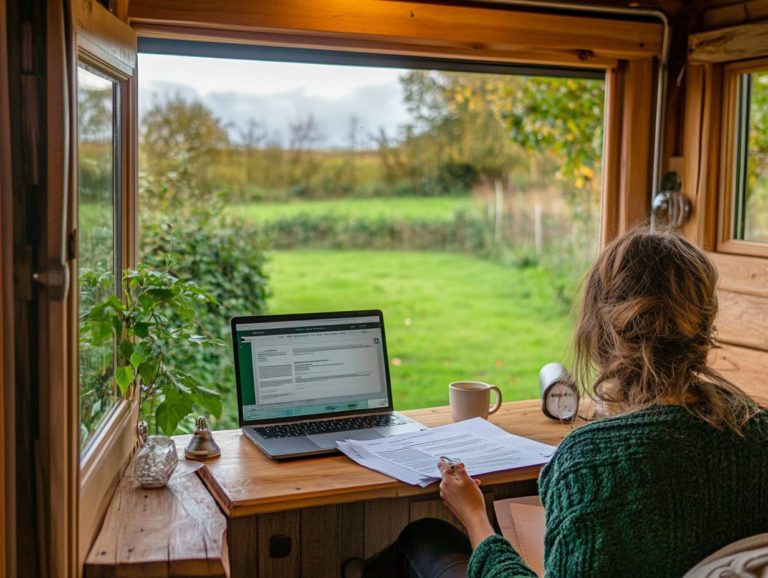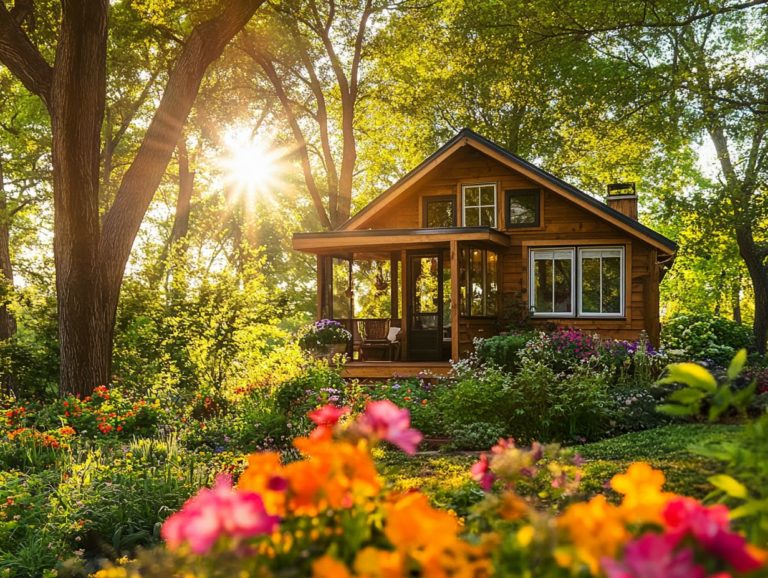What Is the Lifespan of a Tiny House?
Tiny houses have captivated your imagination, offering a minimalist lifestyle and the promise of financial freedom.
But how long can these compact homes truly endure? This article delves into the essential factors that influence the lifespan of tiny houses, such as materials, construction methods, and environmental impacts.
You’ll find case studies of tiny homes that have successfully stood the test of time, along with practical tips for maintenance and upgrades.
Key considerations to ponder when selecting your own tiny house will also be addressed. Uncover the secrets to achieving lasting success in your tiny living journey!
Contents
- Key Takeaways:
- Factors That Affect the Lifespan of a Tiny House
- How Long Can a Tiny House Last?
- Maintaining and Extending the Lifespan of a Tiny House
- Factors to Consider When Choosing a Tiny House
- Frequently Asked Questions
- What Is the Lifespan of a Tiny House?
- Curious about the materials used in tiny house construction?
- Can a tiny house last as long as a traditional home?
- Do tiny houses require a lot of maintenance?
- How often should a tiny house be inspected for maintenance?
- What are some ways to extend the lifespan of a tiny house?
Key Takeaways:
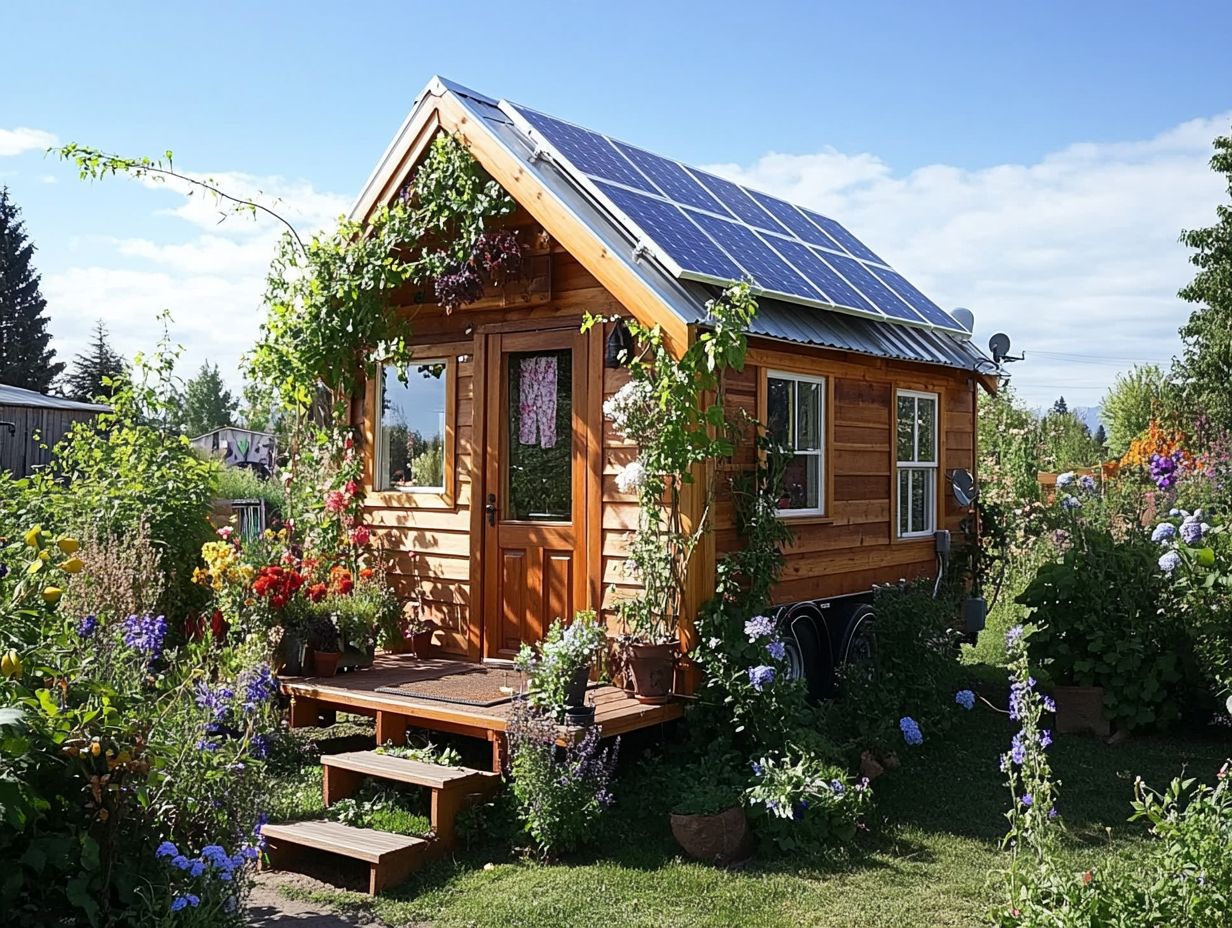
- Tiny houses can vary in lifespan depending on the materials, construction methods, and environmental factors.
- Regular maintenance and repairs, as well as renovations and upgrades, can help extend the lifespan of a tiny house.
- When choosing a tiny house, it’s important to consider longevity as a factor in decision making.
Defining Tiny Houses
Tiny houses, often called tiny homes, offer a refreshing take on homeownership that emphasizes simplicity, sustainability, and financial freedom.
Typically under 400 square feet, these compact dwellings embody the spirit of tiny living. They present an eco-friendly alternative to traditional homes.
Whether stationary structures or mobile units, they provide versatile options for those looking to downsize or adopt a minimalist lifestyle.
As tiny houses become increasingly popular, you may find yourself drawn to the numerous benefits they offer, such as a reduced environmental footprint and lower living costs.
Essential features equip these homes, including innovative space-saving designs that maximize functionality without compromising comfort.
The movement toward tiny living resonates with a broader desire for minimalism, encouraging individuals like you to declutter and focus on experiences rather than material possessions.
As more people turn to sustainable choices, tiny houses emerge as a practical solution for eco-conscious living.
The tiny house on wheels model adds yet another layer of flexibility, enabling you to explore various locations while maintaining a compact lifestyle.
This shift reflects changing attitudes towards housing and a deeper yearning for a simpler, more fulfilling existence.
Factors That Affect the Lifespan of a Tiny House
The lifespan of a tiny house can be shaped by various factors, from the materials chosen for construction to the local building rules.
Grasping these elements is essential as you embark on the journey of homeownership within the tiny house movement.
Considerations such as building permits and energy efficiency are pivotal for durability. They also significantly impact the average costs and financial decisions tied to tiny living.
Understanding local laws can help ensure a smoother experience in your tiny house ownership journey.
Choosing the Right Materials
The materials you choose and the construction methods you employ are pivotal to the durability and sustainability of tiny homes.
By prioritizing options that minimize waste and maximize performance, you can significantly reduce the environmental impact of your projects.
Incorporating innovations like solar panels and energy-efficient insulation not only cuts down on utility costs but also reflects a genuine commitment to sustainable living.
As you navigate the complexities of building permits, collaborating with local authorities is essential to ensure compliance.
This proactive approach helps prevent costly delays and maintains the integrity of the construction process.
Ultimately, a well-informed strategy transforms mere structures into thriving homes that benefit both their occupants and the planet as a whole.
Don t miss out on the chance to embrace this rewarding lifestyle!
Environmental Factors
Environmental factors greatly influence the lifespan of tiny homes. They affect everything from energy efficiency to maintenance needs.
If your tiny home is in an area with extreme weather, consider using specialized materials and designs for durability.
The location of your home is crucial for its performance and livability. High humidity or intense heat can impact your insulation choices.
In regions with heavy snowfall, investing in sturdy roofing solutions is essential.
Incorporating renewable energy sources like solar panels boosts your energy independence. This choice also aligns with green living principles.
By considering these environmental factors, you can build a tiny home that thrives in nature while enjoying the benefits of eco-friendly practices.
How Long Can a Tiny House Last?
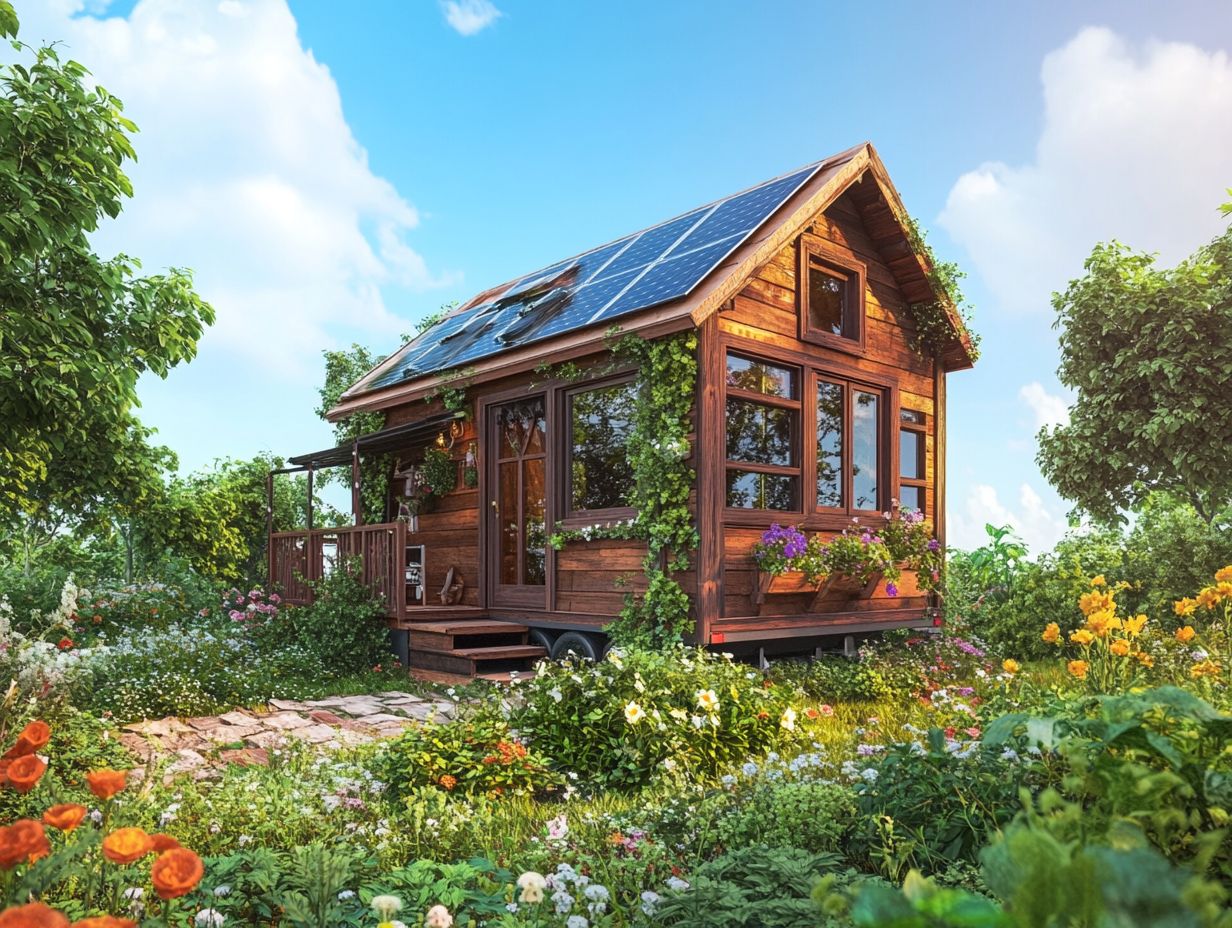
The lifespan of a tiny house can vary widely. With proper maintenance and thoughtful construction, these homes can outlast many traditional houses.
Factors like financial choices during construction and upkeep influence this longevity. Real-world examples show the durability of these compact dwellings.
Homeowners who emphasize quality materials and sustainable practices often find their tiny homes lasting for decades.
This makes tiny living a genuine option for anyone pursuing a minimalist lifestyle.
Case Studies of Long-Lasting Tiny Houses
Case studies show that, with meticulous planning, tiny houses can last 20 to 30 years or more. These examples highlight various sustainable options that enhance durability.
For instance, a project using reclaimed wood and insulated panels minimized environmental impact and improved energy conservation.
Incorporating rainwater harvesting systems and solar energy solutions allows homes to thrive with minimal reliance on external resources.
These studies also show that using local building practices and the right foundation can extend the life of these homes.
Explore various tiny home initiatives for valuable insights into best practices that promote longevity and resilience.
Maintaining and Extending the Lifespan of a Tiny House
Maintaining your tiny house requires a steadfast commitment to regular upkeep. Establish a routine to inspect home systems and address minor issues early.
Thoughtful renovations can enhance your home s efficiency and longevity. Focus on energy-efficient appliances and structural enhancements.
Prioritizing maintenance will help you enjoy your compact living space for years while maximizing your investment.
Regular Maintenance and Repairs
Regular maintenance and repairs are vital for the longevity of your tiny home. You must take an active role in managing your home systems and addressing any emerging issues without delay. This proactive approach helps ensure that minor wear and tear don t snowball into significant problems over time.
Tasks like checking for plumbing leaks are essential. Routinely inspecting your roof for potential damage or wear, and confirming that your energy-efficient appliances are running optimally should also be cornerstones of your maintenance schedule. Seasonal inspections can help you pinpoint potential hazards or inefficiencies before they escalate into major concerns.
By integrating these routine checks and repairs into your lifestyle, you not only protect your cherished space but also enhance its functionality and safety. Prioritizing this diligent upkeep enables you to maximize your investment while fully embracing the unique advantages that tiny living offers.
Renovations and Upgrades
Revitalize your tiny home with exciting renovations and upgrades! These improvements can enhance energy efficiency and overall functionality. By investing in modern appliances, better insulation, or eco-friendly materials, you can significantly extend the longevity and sustainability of your compact dwelling.
These enhancements elevate your living experience and ensure that your tiny home adapts to your evolving needs, making it an ideal choice for those committed to sustainable living. Embracing renovations is a strategic move to maximize the potential of your tiny house.
Take upgrading ventilation systems, for instance. This can improve air quality and lessen your dependence on heating or cooling. Thoughtful enhancements lead to notable energy savings. Incorporating rainwater harvesting systems or solar panels further elevates sustainability, transforming your living space into a self-sufficient haven.
Reconfiguring layouts to optimize space utilization allows you to create multifunctional areas that cater to various lifestyle demands. These updates represent more than mere aesthetic improvements; they are a savvy investment in home systems that promise both economic and environmental benefits for the future.
Factors to Consider When Choosing a Tiny House
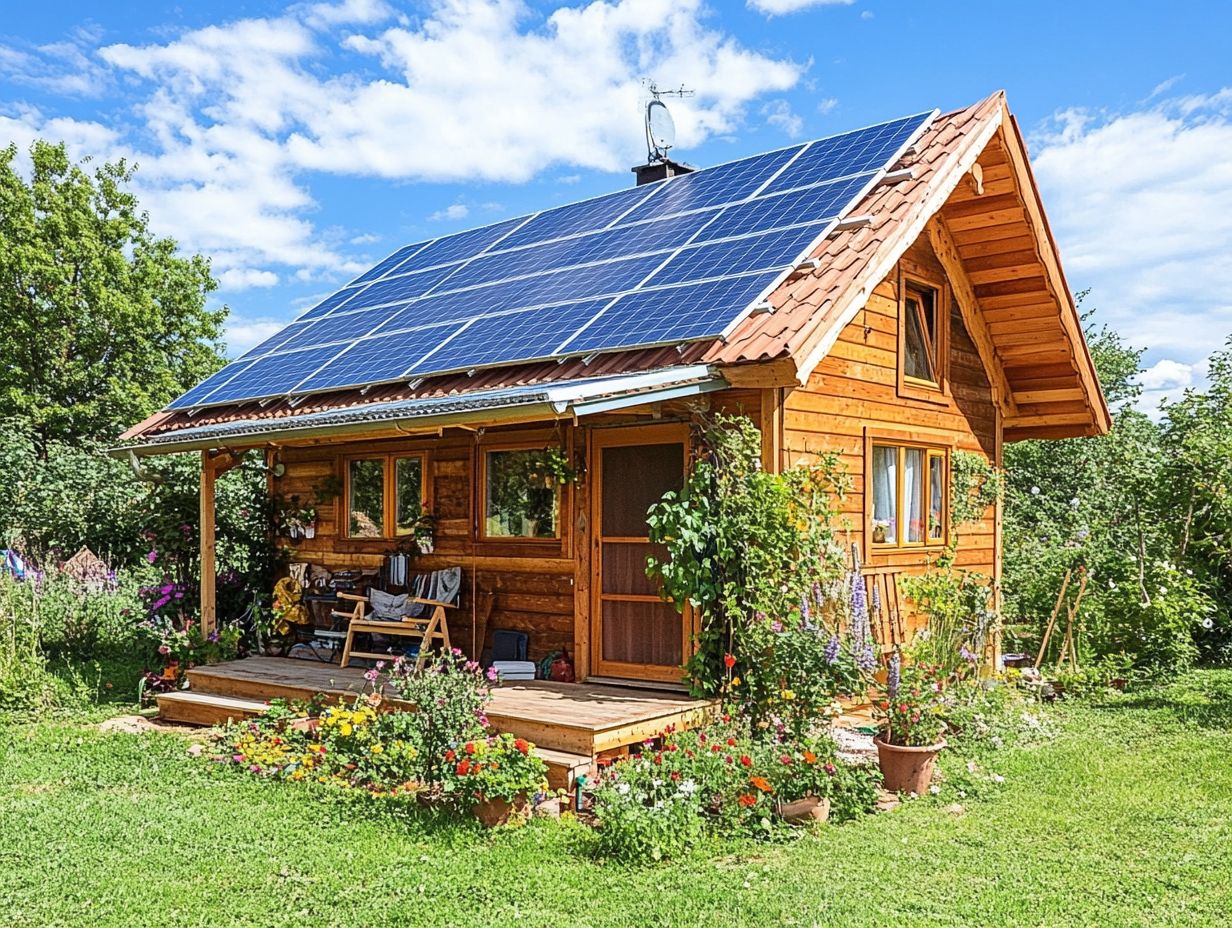
When choosing a tiny house, thoughtfully assess a variety of factors that can deeply impact your homeownership journey. Consider aspects such as longevity, financial implications, and local zoning restrictions. These elements can significantly shape your experience.
As a prospective homeowner, reflecting on your budget, lifestyle preferences, and any potential regulations that govern the construction and placement of tiny homes is essential. For instance, accessory dwelling units are secondary structures that may offer unique advantages and challenges in different areas.
By carefully weighing these critical aspects, you can make informed decisions that align seamlessly with your vision for tiny living.
Longevity as a Factor in Decision Making
Consider longevity as a key factor when choosing your tiny home. It directly influences the overall value and sustainability of your investment. As a homebuyer, assess how the materials, construction methods, and maintenance will affect the longevity of your tiny house, ultimately shaping your financial decisions.
Opting for sustainable choices that enhance energy efficiency can lead to long-term cost savings. Thus, longevity is an essential component of the tiny living experience. Understanding the relationship between longevity and financial planning is paramount for potential homeowners.
As you weigh your options, factor in how selecting eco-friendly materials and efficient designs can enhance your home’s lifespan and reduce your carbon footprint. This forward-thinking approach fosters resilience against environmental changes, minimizing the need for future renovations or repairs and contributing to lower expenses over time.
Explore how energy-efficient appliances, renewable energy sources, and effective insulation can elevate the sustainability of your tiny home while potentially boosting its market value. By adopting a holistic view of longevity, you can make wiser financial decisions, laying a solid foundation for both immediate enjoyment and future stability.
Summary and Final Thoughts
Tiny homes offer a fascinating alternative to traditional living. They emphasize sustainability, financial freedom, and a simpler lifestyle.
This compact living style promotes a simpler way of life. You can focus on what truly matters.
With tiny homes, enjoy less maintenance and lower utility costs. You ll also unleash your creativity in design and organization.
These homes are great for anyone wanting to reduce their carbon footprint. They invite a focused and thoughtful way of living.
By concentrating on the essential elements of thoughtful living, you can confidently embrace this lifestyle. Be aware of the benefits tiny homes provide and the importance of making informed decisions.
Frequently Asked Questions
What Is the Lifespan of a Tiny House?
The lifespan of a tiny house can vary. On average, it lasts between 10 to 30 years, depending on materials, climate, and maintenance.
Curious about the materials used in tiny house construction?
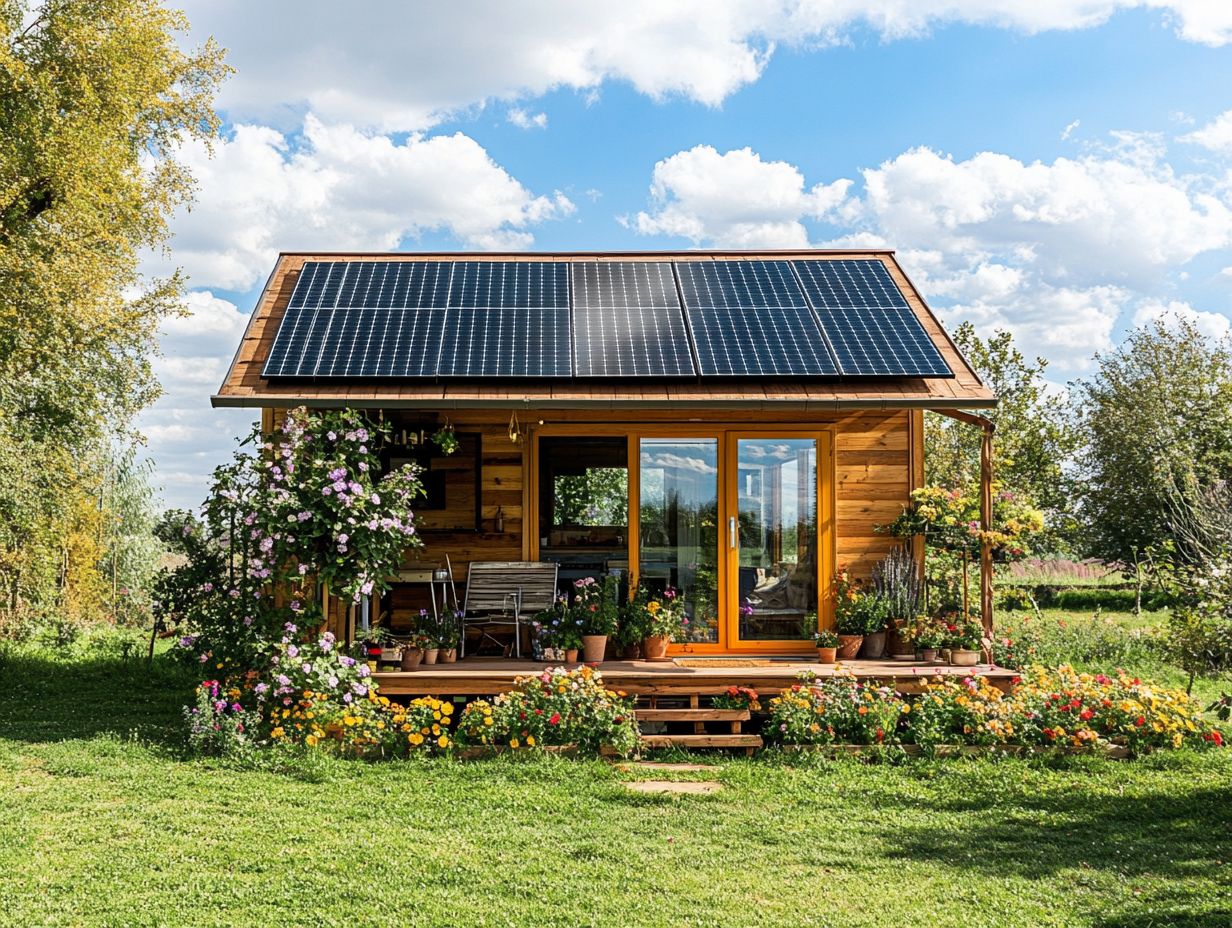
The most common materials include wood, metal, and recycled components. These are lightweight yet durable, perfect for tiny house living.
Can a tiny house last as long as a traditional home?
A tiny house might not match a traditional home’s lifespan. However, with proper maintenance and quality materials, it can last just as long.
Do tiny houses require a lot of maintenance?
Maintenance needs depend on materials and location. Generally, tiny houses require less upkeep than traditional homes due to their size.
How often should a tiny house be inspected for maintenance?
Inspect your tiny house at least once a year. Regular checks help catch potential issues before they become major problems.
What are some ways to extend the lifespan of a tiny house?
Frequent inspections and using quality materials are key. Choosing a suitable location with a moderate climate also helps prolong its lifespan.

